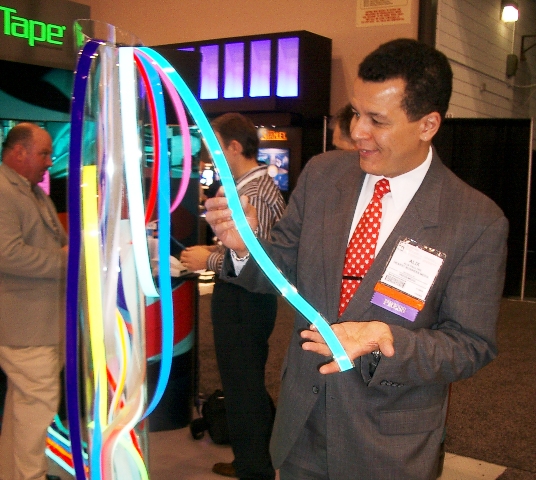
EL tape at LightFair 2007
I’ve often said that the push towards compact flourescent lamps (CFLs) is premature and damaging in the long run. CFLs are bulky, contain mercury, and are at best a stopgap in applications requiring continuous lighting to reduce energy demands. But CFLs are not the future of lighting. Solid-State Lighting (SSL) is.
An SSL light source does not require a special operating environment like a incandescent, flourescent, noble gas, or chemical lamp, so they are much more robust and have a significantly longer operating lifetime than anything based on a glass envelope at high light-output levels. Since an SSL emitter uses a more direct method of energy conversion to light, it is also more efficient.
Electroluminescent (EL) and Light-Emitting Diode (LED) technology is decades old, but recent advances have finally enabled the creation of a new lighting industry. Strings, sheets, bars, bulbs, and even transparent surfaces can now emit light on command. You can now buy LEDs with footprints measuring in the square millimeter, or sheets of flat EL illuminator measured by the square meter. Ceelite’s Light Emitting Capacitor (LEC) electroluminescent tech is currently being ussed in applications from illumination to signage.
Such light sources will replace most lamps in most places. (The light bulb didn’t completely replace the candle, either.) Already we are seeing LEDs take the place of light bulbs in traffic signals, and soon they’ll replace street lights as well. This is a good thing, as LEDs also put out light with a broad spectrum in contrast to monochromatic sources like sodium lamps.
There are some other interesting lights in the wings, too. While not quite an SSL source, the Ceravision Continuum™2.4 microwave – powered electrodeless lamp system promises to replace metal-halide lamps in high-intensity applications with a bright, ecological (no mercury) lamp with a projected lifetime of up to 50,000 hours.
This is why it is important to think of this as the Solid-State Lighting (SSL) revolution, not just the LED lighting revolution, as more techs crawl out from garages and labs around the world now that more companies and individuals are researching light generation than ever before.
So my advice is to buy a few CFLs for those long-duration lighting tasks and start looking for the latest generation of SSL lamps now becoming available.
This isn’t just restricted to illumination, either. SSL displays like those using Organic Light-Emitting Diode (OLED) technology are significantly thinner than displays requiring glass-tube backlights. The best LCDs are now being driven with red, green, and blue LEDs and can generate a color gamut 115% or better than the NTSC TV standard.
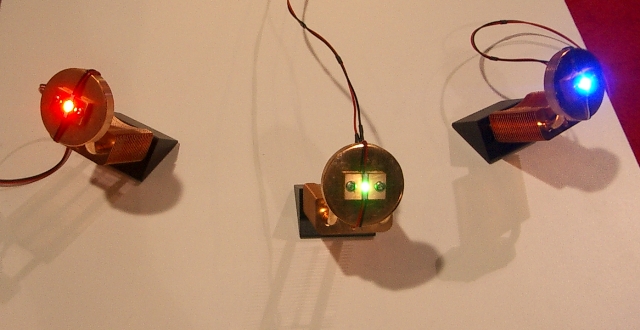
Our biggest problem is the same as we have with telecom – our infrastructure is so established nobody wants change. However, if we do not jump into this industry with both feet we’ll lose the lead we currently have as the rest of the world leapfrogs us.

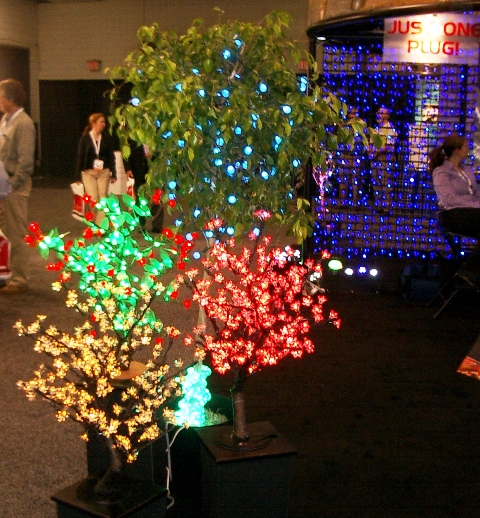
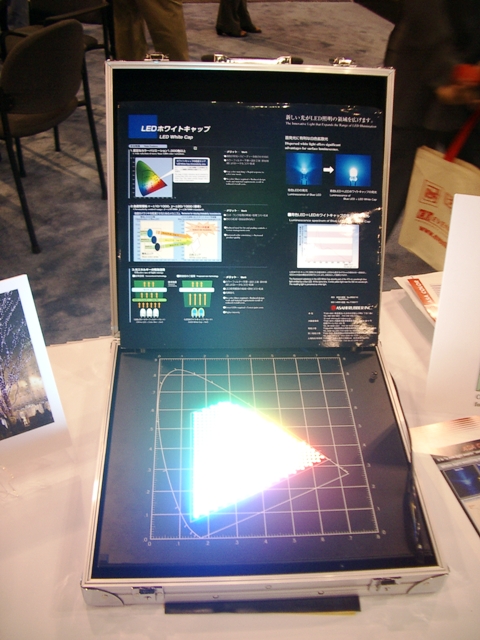
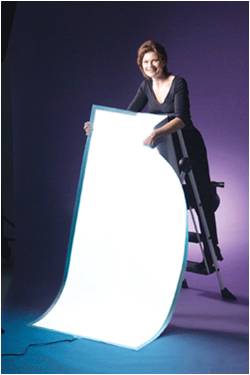
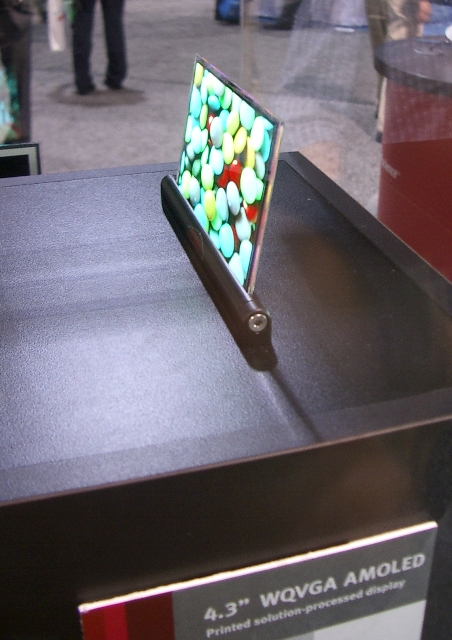














Mercury is no reason to avoid CFLs, just hypocritical FUD from vested interests. The mercury emitted by coal fire power plants to produce the extra energy used by incandescent lights. If CFLs are recycled, then the mercury released into the environment is reduced even further.
We ALREADY emit large amounts of mercury into the environment. The move to CFL would actually REDUCE the emissions even if a better technology is just around the corner (which it always it, by the way).
In the immortal words of Chuck D., “Don’t believe the hype.”
Looks great to me. Save energy and have more creative options, as well.
That is all great, but last time I checked, LED or any other type of solid state bulbs were not on the shelf at my local Lowes store, CFs were. In fact, the only place I’ve seen LED bulbs is specialty web sites. So until I see them at Target, Home Depot or my local hardware store, myself and others will be using CFs. To pan them in favor of a technology that is not yet mature and readily available is stupid and short sighted.
“until I see them at Target, Home Depot or my local hardware store, myself and others will be using CFs.”
jesus, are people really that lazy?
jesus, are people really that lazy?
Yes
Great post, Smartalix! Lighting is one revolution that can’t happen quickly enough, considering the environmental, energy, and political implications.
A quick zoom on your photo shows me you went undercover as the mild-mannered “Alix” and not the notorious “Smartalix” from DU. I suppose it’s always best not to be hounded by autograph seekers 😉
Check out the book “Brilliant: The Revolution in Lighting Technology” it is about the research and breakthroughs that are leading to SSLs and it is fascinating.
Cool stuff. Can’t wait to see more of this readily available.
jesus, are people really that lazy?
Yes
wow.
no wonder the only sacrifice the republican administration asks people to do to support our troops is to fork over our freedom.
the iraq war would be over tomorrow if it so much as inconvenienced republicans.
#9 Weird, I don’t remember this post having anything to do with Republicans, Bush or the Iraq war.
Way to go TOOL.
The lifetime claims for these new light sources are overhyped. The key is how a failure is defined. There are LED traffic lights all around here and half of them already have dead areas that make them look ugly.
Although MTBF for a single LED might be 50K hours, when you gather hundreds together to make a light the chance of a failure rises astronomically. For best results, the LEDs should be in parallel, not series, and the light output should be diffused to accomodate a few failures.
#4
… are people really that lazy?
People in general are not scouring the Internet for overpriced new stuff.
#6
I loved the post as well. Seems that the technology has been improving.
Smartalix, that was a very well done update. I currently have CFL’s throughout my house… over 40 of them… but I’ve found that although they still save on power, they don’t last nearly as long as they claim. Typically, a CFL in an area where it’s on for 2-3 hrs a day will last 2 years. On the other hand, the bulbs I first bought for $6 each are now $2 each. I can get an 11 watt CFL (50 watt incandescent equivalent) for $1.
Chuck D, you can’t recycle CFL’s economically. They are too complex. Also, think about all the incandescent bulbs you’ve broken by accident in your lifetime. CFL’s are very sensitive to bumping. They’ll even snap if the socket is tight or you turn them in too hard. Instead of a mess of glass, you get a mess of glass and mercury… sometimes right on you.
From previous discussions on Dvorak, I get the impression that he USA is way behind Canada with energy conservation and practices.
In other words, Smartalix is way ahead of you. I have been slowly switching over to SSL’s for 2 years now. All our christmas lights ate SSL’s and some room lighting solutions (multi SSL clusters) are in the stores now.
If people would just use the same logic for WiFi and stop pushing for mass wifi and broadband on par with other countries.
#10 Shucks, Qually, grog was only thinking outside the bulb.
Ummm…. that should have read “All our Christmas lights are SSL’s…
I didn’t notice any cannibal lights among them. 🙂
6,
I was attending the show in my “day job” role as Executive Editor of Electronic Products Magazine. Thanks for the compliments. (#12 too!)
11,
If you take some photographs of ugly traffic signs in your neighborhood I’ll post them here. I live in NYC and not only are the lights working but the city saves millions in maintenance. Wall-Mart is changing much of their display signage to SSL and they project a 10% overall savings. (Since they spend 66% of their dollar on energy that means they’ll be able to cover their fleet costs (~7%) on the savings alone.
This is nothing to soft-pedal. If we do not move aggessively into this market with products and designs we’ll lose yet another technology lead to the rest of the world.
Alix, “This is a good thing, as LEDs also put out light with a broad spectrum in contrast to monochromatic sources like sodium lamps.”
For astronomers, this is a really bad thing. Light pollution is a major problem. Bet you can’t see many stars in NYC, and most folks don’t even know that a real dark night sky exists — they’re used to that garbage gray glow that permeates the sky in large cities. At least with mercury and sodium lamps that emit light in specific narrowband wavelengths, one can purchase a narrowband filter to get rid of the junk. With broadband emissions, such as SSL or incandescent lighting, no filter will work. Might as well just turn the beauty of the night sky off, so people can ignore it as they have been for the last 50 years.
Here’s a picture of earth skies at night::
http://antwrp.gsfc.nasa.gov/apod/ap061001.html
For Bubba :
http://tinyurl.com/ynp5q2
Better than EL strips, but not in the market yet.
Remember that with daily use, EL strips won’t last past 5 years.
For that matter, neons and compact neons won’t either.
The newer LED’s are better in this respect, the problem is power distribution. Easy to distribute 120v or 240v AC, not so easy with 12v DC.
Putting transformers for LED’s at the point-of-use greatly increases cost, better to have one larger transformer with wiring just for a group of LED lamps / fixtures.
At cost price, a 1 watt Luxeon LED is roughly 8$, so a screw-in bulb that can replace a 100watt lightbulb would cost over 50$ (5x1watt).
Whereas CFL’s cost 8$ / 10$ for a 40 / 60 watt bulb remplacement.
The market for LED light bulbs are tiny, where it has to be cost effective within five years to surpass neons.
My fav combo :
A centralized cheap light source, easy to replace.
Distribute light with fiber optics.
Imagine a cheap 0.99$ 100w bulb lighting up an entire house.
With the other post about using sunlight as a daytime source.
18,
BubbaRay, LED light sources are highly directional with up to 40% less backscatter. They would actually improve the nighjt sky as they would significantly reduce stray light.
19,
You wouldn’t use transformers, you’d use much smaller and lighter switching power supplies. SSL will require an entirely new way of thought in lighting design. (Not to mention the advantages of having light as an addressable instant-on/off facility subsystem.)
As far as price goes, you can now get a 100+ lumen LED now for ~$2 in OEM quantities.
#19, Mark, that’s some pretty cool technology, thanks for the link. As long as it’s used for indoor, not outdoor !! And from the article posted earlier, one can get different colors, too.
http://www.dvorak.org/blog/?p=11825
#21, Alix, I agree about the LED lighting, as long as it’s directed and shielded properly. Bummer that it’s not narrow spectrum, but as long as it is not shining into the sky, thus wasting energy and contributing to light pollution, not a giant problem. It’s that wide spectrum unshielded SSL I’m worried about.
One downside to the LED lights, is no dimmer.
My wife loves dimmers.
When I had the in ground cement pool built two years ago, I asked for a special mix for the bull-nose around the pool.
If you mix powdered glass instead of powdered rock, you get a semi-translucent cement that’s just as strong.
Then with a single underground light source (or two) you light up the entire rim of the pool. Or even make the entire pool out of this glass cement.
Well, didn’t happen. The pool maker thought this was so funny, we was still chuckling half an hour later, and the next day . . .
(I still think it would be cool)
23,
In test deployments in places like parking lots and garages people polled said they felt much more secure because they could see colors. In a monochrome light environment something almost has to move before you notice it becuase many of the contrasts we require for visual cues are absent. Streets look healthier when all of the colors of the signage and people and vehicles are color-accurate.
24,
You can get dimmable LED lamps. Here’s one from 2004:
http://www.tmcnet.com/usubmit/2004/Oct/1088474.htm
It is only the most recent generations of LEDs that are good enough for incandescent-replacement lamp applications, so I understand if there is a lot of misinformation out there. However, the emitters are now bright enough, efficient enough, and if deployed in volume cheap enough to now move into the mainstream.
#25, Alix, In a nutshell, light pollution is misdirected or misused light… generally resulting from an inappropriate application of exterior lighting products. Light pollution comes in several flavors… each with its own negative effects. These are: sky glow, glare and light tresspass.
Light pollution wastes billions of dollars annually in the United States. 5 to 10 billion depending on whose numbers you want to use.
Agreed that shielded and properly aimed LED lighting would be a large improvement.
http://www.starrynightlights.com/lpIndex.html
Good article Alix.
#17
Looks like this thread will disappear soon, but I’ll try to get some photos tomorrow.
#28 use CageMatch, the fun-to-use Dvorak forum
This is more of a general post, but we’ve tested Light Beam’s 5 watt solid state illuminators and it puts out more than 500 lumens, which is quite impressive. It also comes with a dimmer, so it’s easily controllable. We tested it with Lumenytes solid core fiber and we were able to light more than 175 ft. with what appeared to be little to no light loss.
http://www.lightbeaminc.com
My point is, ther are definitely technologies out there coming that can reduce CFL usage, utlize the power of LED’s and help reduce emissions at the same time.
sj